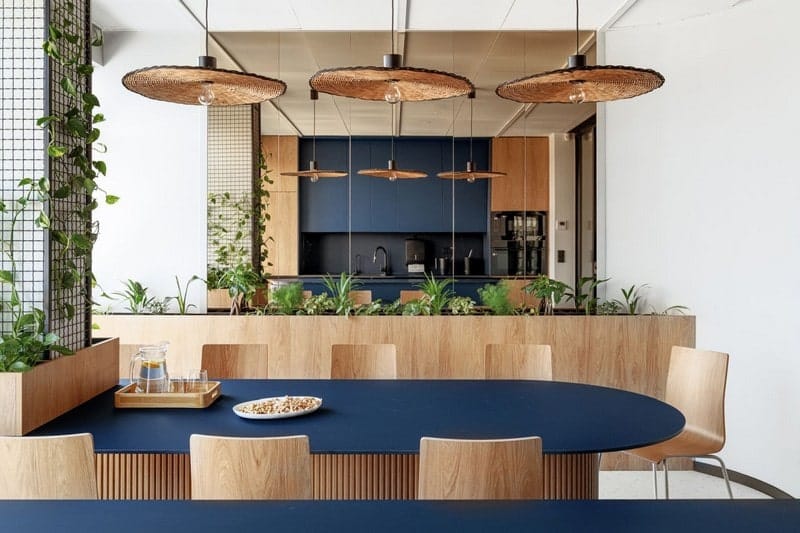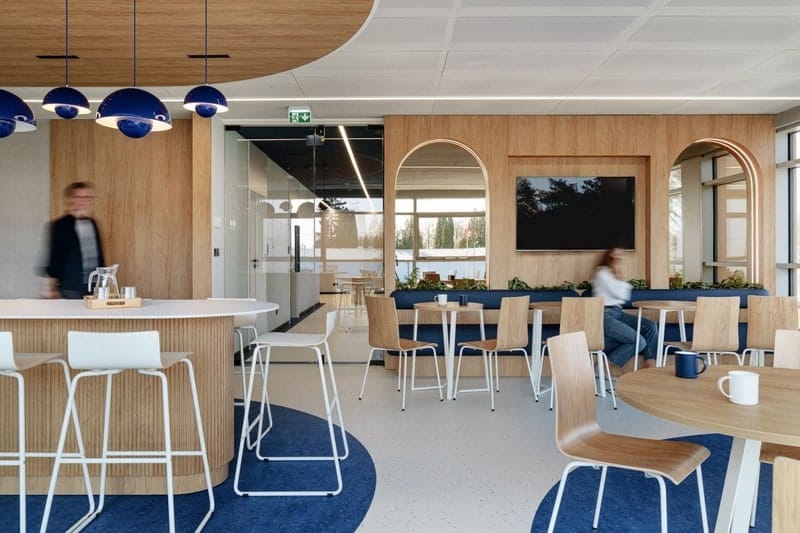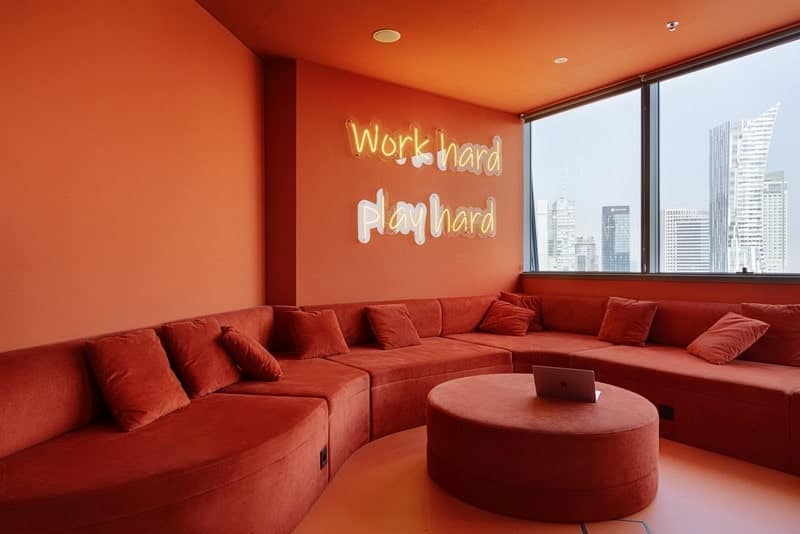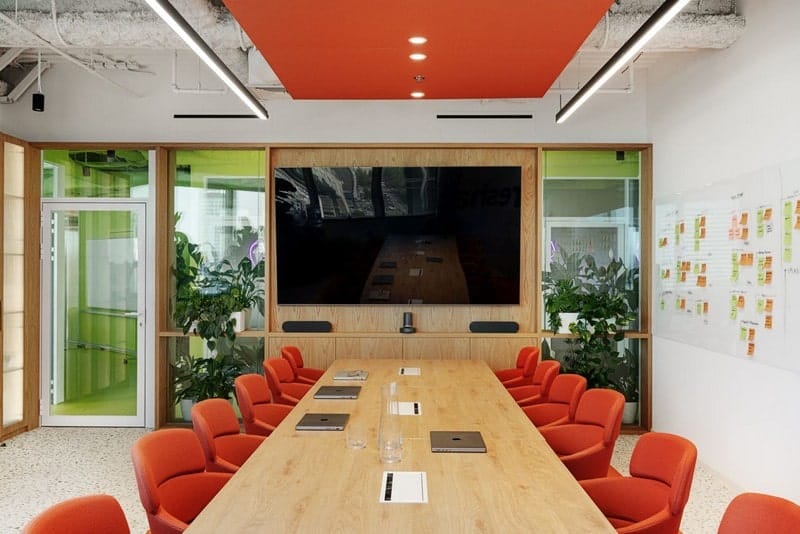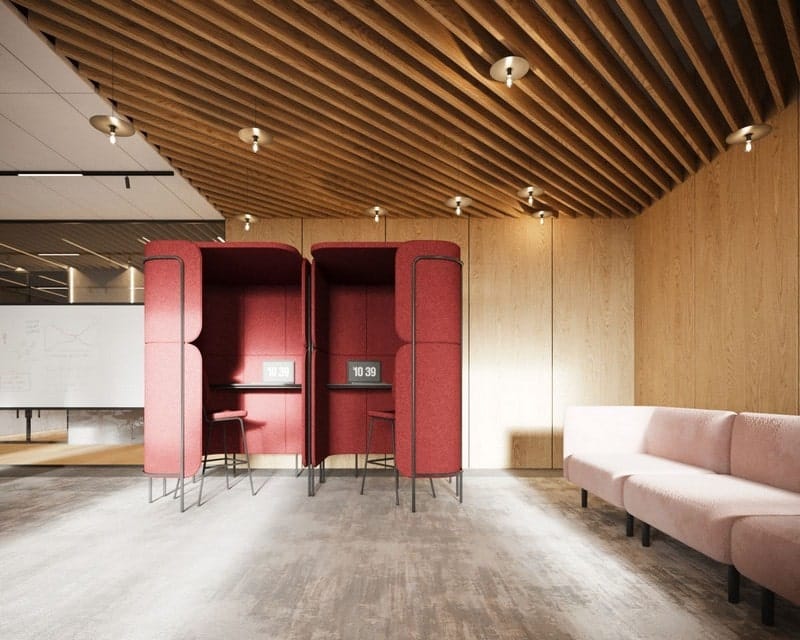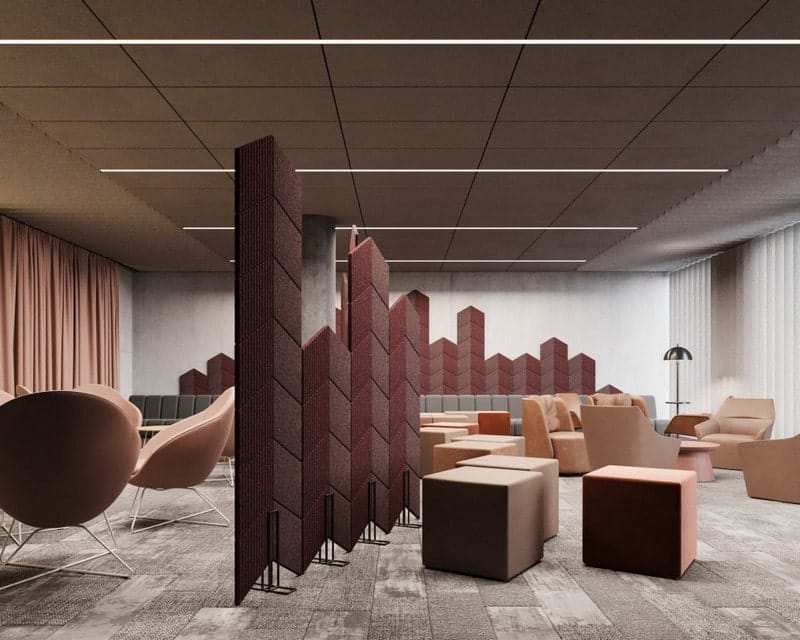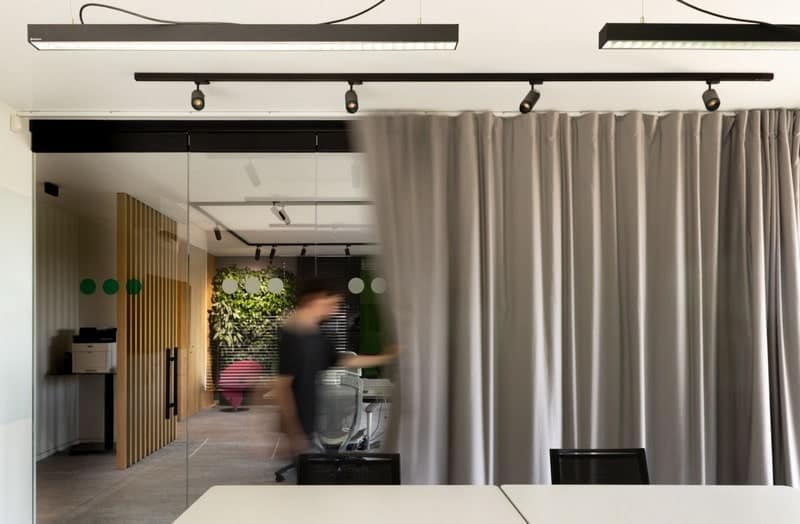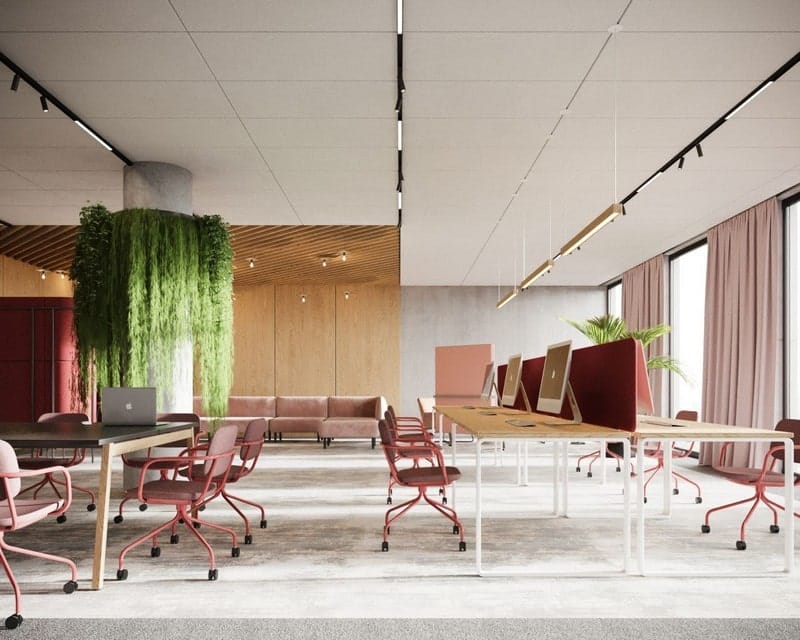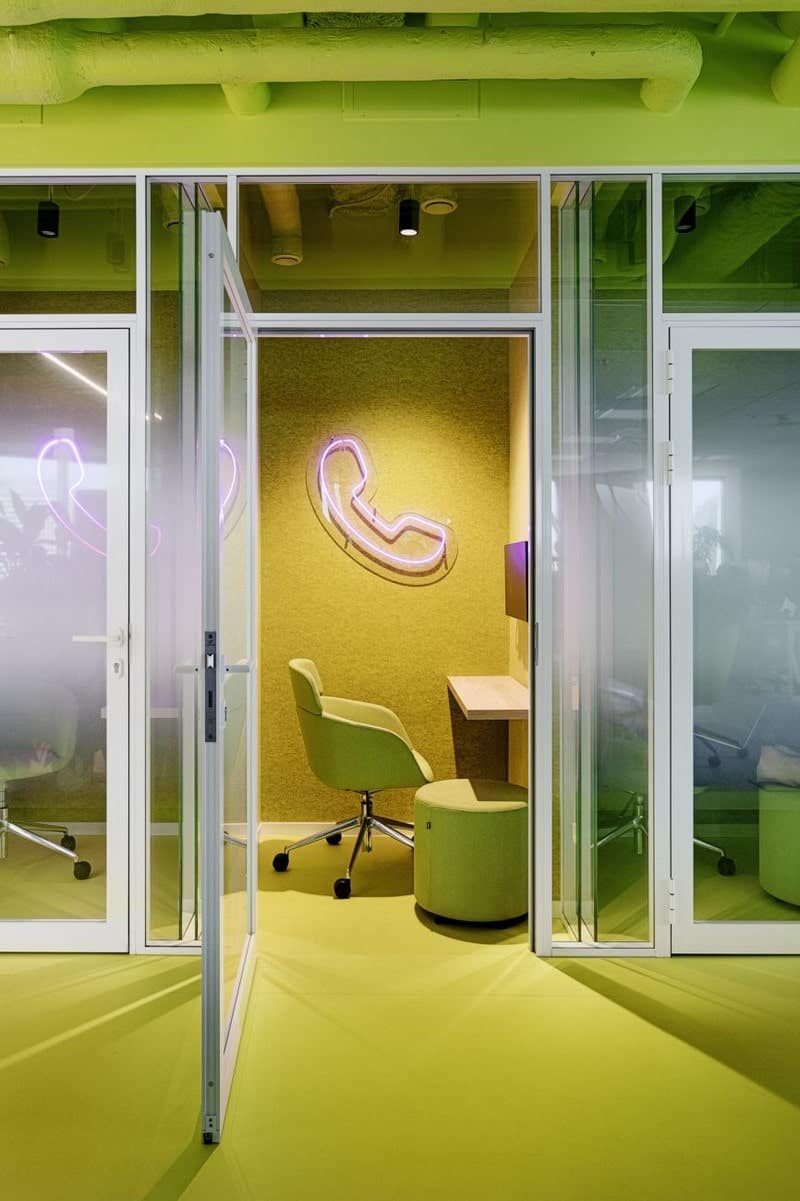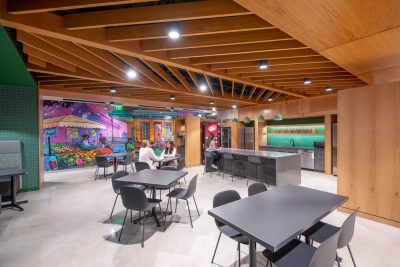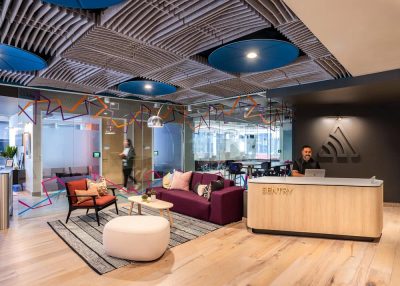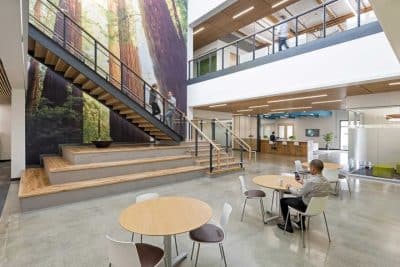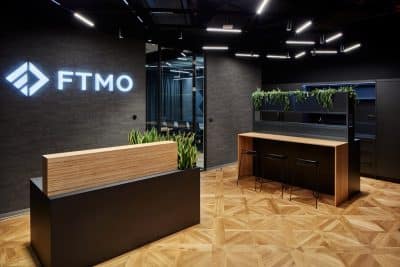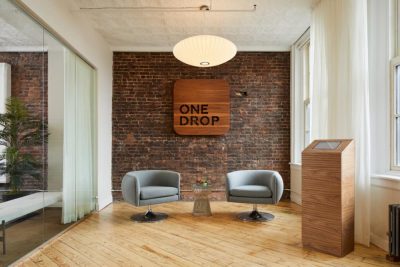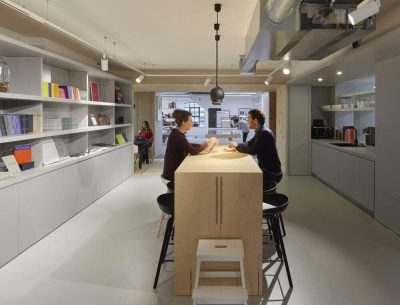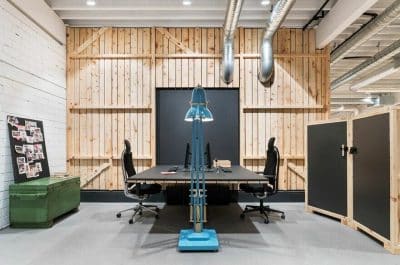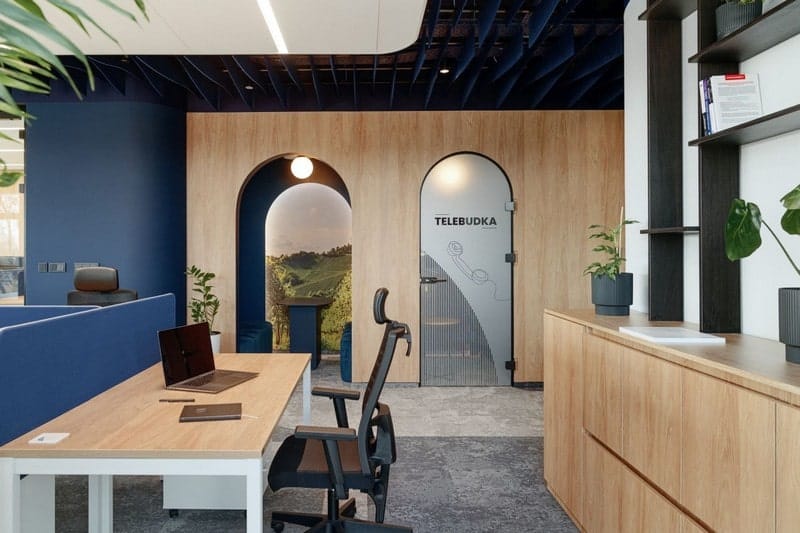
The youngest generation of employees is increasingly making its mark on the job market. We’re referring to so-called “Zoomers” – those born between the late 1990s and the early 2010s. Born and raised in the digital era, they stand out significantly from previous generations. Their expectations and preferences regarding the workplace also differ greatly from their predecessors. Dominika Ogłoblin, an architect at SAAN Architekci, explains what an office space tailored to the needs of future workers should look like.
The youngest generation entering the workforce is often described as individualistic. However, their preference for independent work does not exclude the need for building relationships or the ability to work in teams. The pandemic taught them flexibility and emphasized the importance of mental well-being. As a result, they tend to prefer remote work, which offers them greater autonomy and freedom. Generation Z also places a high value on aesthetic surroundings and maintaining a healthy work-life balance – values they expect to see reflected in their workplace as well. “Encouraging Gen Z to work from the office is a contemporary design challenge. In my view, the office should respond to diverse needs and working styles, while also creating an inclusive environment that is friendly to neurodiverse individuals”, says Dominika Ogłoblin, architect at SAAN.
Adapting spaces to individuals’ needs
Younger generations are becoming increasingly aware of and sensitive to inclusivity, which they also expect to be respected in their surroundings. Offices should be designed with this principle in mind. The Human-Centered Design approach takes into account human needs, limitations, and expectations throughout the design process.
Addressing the needs of neurodiverse individuals involves minimizing external stimuli. “Considering people with attention deficits or hypersensitivity to sound, light, or color should become a standard in design,” emphasizes Dominika Ogłoblin.
Muted, natural tones provide a sense of calm and create an environment that promotes focus and tranquility. Introducing greenery improves air quality and has a soothing effect on users. A key element of this philosophy is HCL (Human-Centric Lighting).
“Non-intrusive lighting optimized for circadian rhythms – adjusting color and intensity throughout the day – supports concentration and improves daily functioning,” she adds. Comfort at work is further enhanced by features like dark light lenses and fixtures with integrated prismatic diffusers that reduce glare.
Spaces for different work styles
Inclusive design also takes into account diverse work styles. It should support both collaborative teamwork and the need for deep focus. Phone booths or quick-meeting rooms reduce noise and allow for uninterrupted concentration – particularly important for individuals sensitive to sound. “In addition to acoustic separation, visual separation is also worth implementing, such as curtains along glass walls, to block out hallway distractions,” says Dominika Ogłoblin.
Effective teamwork is supported by informal zones that encourage group communication and brainstorming. Solutions that facilitate fast visualization of ideas boost efficiency and foster creativity. Large tables, whiteboards, and writable surfaces help organize thoughts and support seamless collaboration. Flexibility in workspace arrangement can be achieved through modular furniture, mobile acoustic panels, movable seating modules, and furniture on wheels, allowing spaces to be adapted to users’ current needs.
A Space Worth Returning To
To serve as an attractive alternative to working from home, the office must offer more than just a place to work. “Attractive spaces combine functionality with aesthetics, creating a comfortable and welcoming environment,” explains Dominika Ogłoblin. A varied layout with clear zoning helps facilitate work tasks, but meeting social needs is just as important. Generation Z thrives in less formal spaces. The increasingly popular café-inspired design aligns perfectly with their expectations. An office styled like a coffee shop enables open communication and provides a comfortable work atmosphere. Ergonomic, soft seating and height-adjustable desks further enhance comfort.
Equally valuable are rest areas – spaces where employees can recharge and unwind. Recreation areas, offering entertainment and opportunities for social interaction, are also becoming more common.
Such thoughtfully designed offices – which embrace diversity and prioritize employee well-being – foster a sense of belonging and make employees feel connected to the space. Informal environments, visually appealing interiors, and comfortable furnishings create workplaces that people genuinely want to return to.
